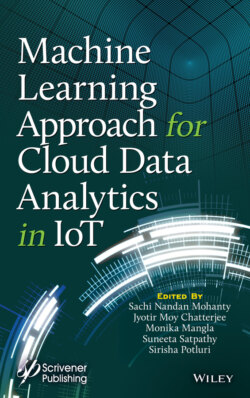Читать книгу Machine Learning Approach for Cloud Data Analytics in IoT - Группа авторов - Страница 76
2.6 Related Work
ОглавлениеHere, we present the analytic report which logically protects the mind front of every individual interest related to be it government, business, and industry or academic with IoT in their own prospective. As a part of this opportunity, the threat issues around cyber security are manipulated and controlled with concepts of machine learning. This guide also looks at warnings which consist of data manipulations, theft identification, and cyber warfare. It also focuses upon the current issues correlating data autonomy, digital succession, and leveraging technical talent. It also looks upon for the need of the hour, i.e., the challenging issues of collaboration for mitigating the treats with education and awareness of artificial intelligence to maintain a balance between the nomenclature of privacy and security where cyber security is encountered with sanctity of data in computer system.
Cybercrime overhauls in versatility approaches like denial-of-service attacks over the web to theft, exaction, and manipulative annihilations.
It is also found from the study that in various fiber optic routers and networks which constantly fend off the queries and with virtual address being played as the medium of data communication, that allows the software to delve into over predictions and emerge as the sensor encompassing it. Here, we can think of the latest developments from 2018 to 2019 in terms of Botnets. This is because be it a personal computer, laptop, tab, webcam, or even a Wi-Fi router which are very common these days in our homes, this is where a moderate security design visualizes devices that have come up with designs that can easily bypass and foster into installation of malware and control the device remotely and this is where the Zombies can be trained like trained data sets using the learning methodologies that could go forward to a nautical DDOS attack. This was first seen over when Australian Bureau of Statistics & Census website that was publicly hacked and later on when French Internet service provider OVH suffered an attack. The above concept implemented here can be topped up by exponentially increasing the botnets capacities, thereby making the source code being hardcoded range of shell scripts applied over to scan the IP ranges and attempt to remotely sense and test the data sets eventually before the technology gets integrated upon cyber infrastructure in a secured transformation. Hence, the above implementation could potentially give terrific results.
As machine learning is at its pace fastened up as a leverage tool against malicious attackers, at the same time, cybercriminals are also on the tip of their toes for getting into new artificial intelligent (AI) techniques for a better data analysis and pattern recognition. Hence, the machine learning algorithms, such like neural networks, can also be thought of as an attempt to research upon to train and speed up the automation process of the algorithms which can enhance the possibility of combating over cybercrimes.
Various studies have also been performed in showcasing the intelligent studies which can be revived upon AI-powered leaning algorithms which not only can record the malware signature but also can replace the generation of codes with human intervention. A burning illustration is in a recent operational research at Microsoft to create AI system that can generate code even without human intervention.
The analytic algorithms will enable the IoT device manufacturers to ensure the recognition of the requirement to order and re-organize the materials and its associated products being technically enabled to reduce the interaction between users as well as intervention for an enterprising replenishment which will make sure that the information reports a huge percentage (around 92%) of total cyber incidents.
This is because the various IOT-enabled sectors are getting hitched over protecting the sensitive data as estimated. The study is a mechanism which can allow the harmless constituents to be seamlessly desegregated into the IoT structure and hence has implemented “immune automated security response mechanism”.
